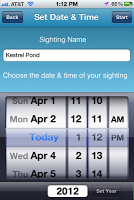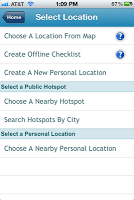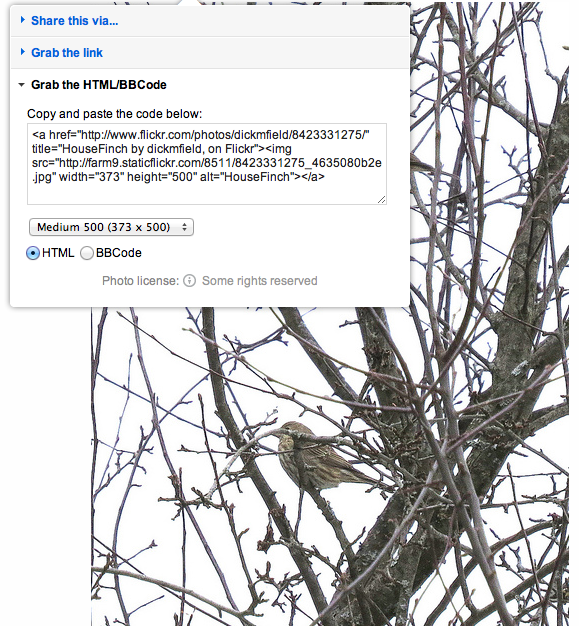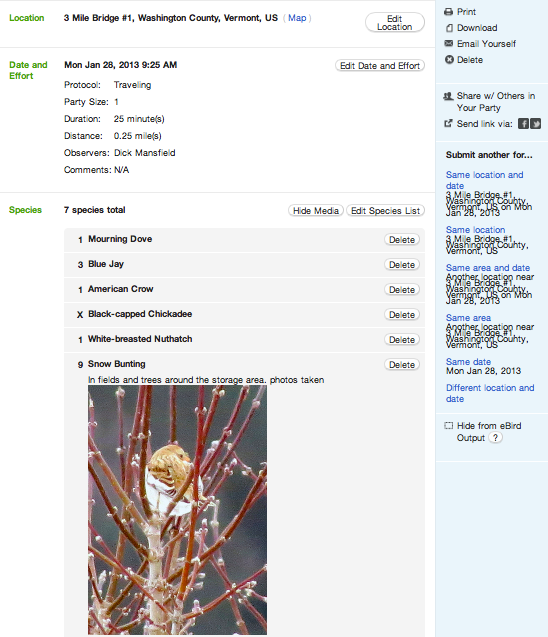I decided to stay close to home today as I work through a partial recovery of my pinched neck nerve. Walking and exercise seems to help while driving can be problematic.

Just before we started out, this White-throated Sparrow was chowing down on thistle seed.
So, Penny and I trucked down to the Wrightsville Reservoir where she can run free and where there are few visitors this time of year. She did her best, running to and fro, to scare off every bird in Washington County. There were plenty to satisfy her and me.
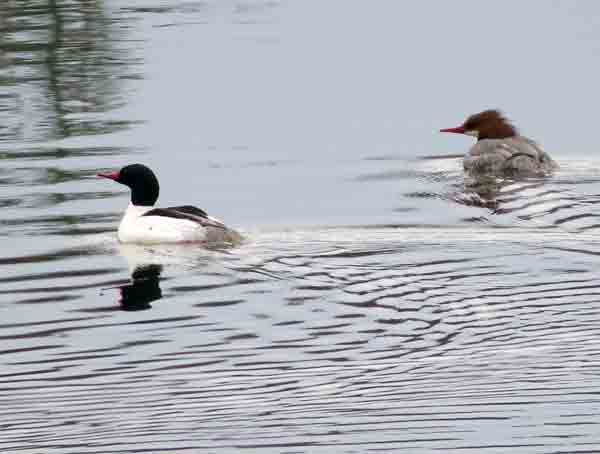
The first birds we saw on the water were these Common Mergansers.
As Penny raced up and down the paths and along the shoreline, the Mallards and mergansers just moved out a little further, while a couple of Canada Geese honked their displeasure, from a distance. The whole area is flooded all winter and spring (this a flood control dam) and only now is drying out. Dozens of Song Sparrows sang their hearts out and chased one another in the morning 40 degree temperatures.
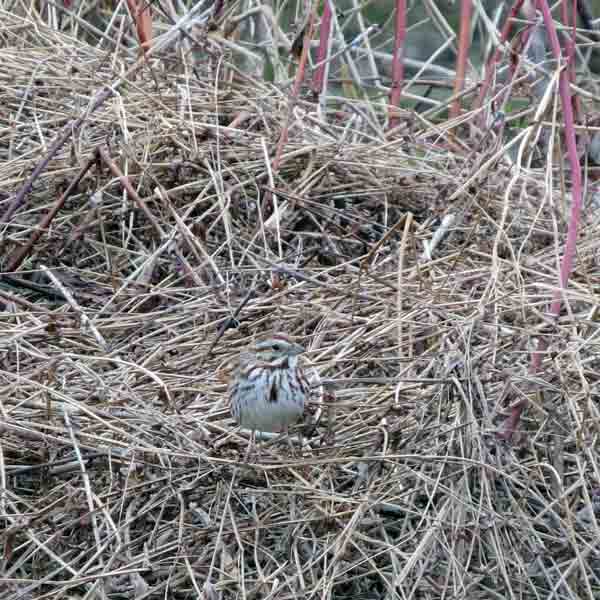
You can’t see me here. A Song Sparrow watched us pass by.
There were many Swamp Sparrows singing their “sewing machine” song and I got wonderful looks at several. My fingers were numb from the temperatures and they keep moving, and are in the brush, so they made photography impossible. They are my 70th County bird.
Later in the day, we birded our property and the adjacent forest. One of the highlights was a pair of Brown Creepers working on our white pines. I heard them first and then laid on the forest floor to watch them (easier on the neck). We have a couple of pairs that seem to be in residence and it is always a treat to hear and see them.
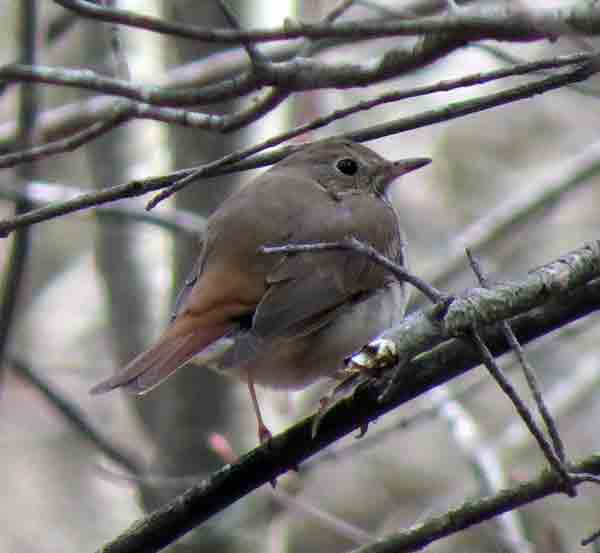
I love Hermit Thrushes. They don’t seem to be vocalizing yet but we have a few that I hope are nesting here.
We came home to an array of birds in our backyard, both at the feeder and in surrounding trees. Here is a shot of a Dark-eyed Junco and a pair of Purple Finches on the same branch of our old apple tree.
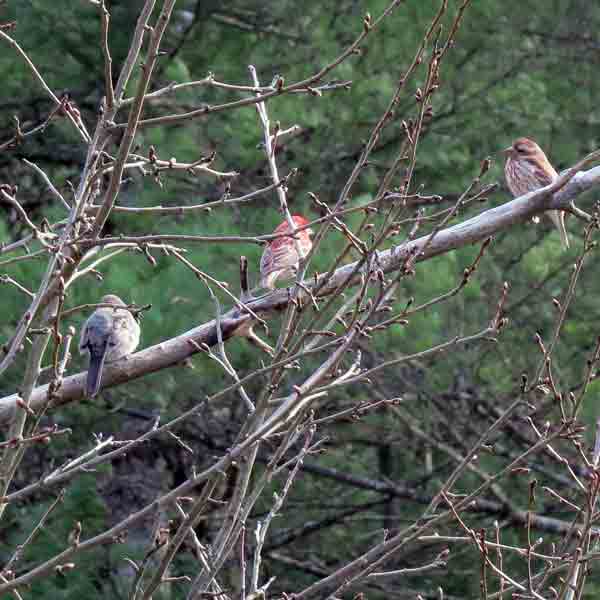
The Dark-eyed Junco to the left looks too light but it was just the afternoon lighting angle.
Here are the eBird reports from today.
Wrightsville Reservoir – East Montpelier (190 acres), Washington, US-VT
Apr 26, 2013 8:25 AM – 9:44 AM
Protocol: Traveling
1.0 mile(s)
Comments: Northern end by swimming area <br />Submitted from BirdLog NA for iOS, version 1.5.3
17 species
Canada Goose 2
Mallard 6
Common Merganser 5
Downy Woodpecker 1
Eastern Phoebe 2
Blue Jay 1
American Crow 3
Common Raven 1
Black-capped Chickadee X
Golden-crowned Kinglet 1
American Robin 4
Yellow-rumped Warbler 1
Song Sparrow X
Swamp Sparrow X Numerous singing lustily
White-throated Sparrow 6
Red-winged Blackbird X
Purple Finch 2
Dick’s Backyard-woods, Washington, US-VT
Apr 26, 2013 3:00 PM – 4:28 PM
Protocol: Traveling
1.5 mile(s)
Comments: Dog walk – long <br />Submitted from BirdLog NA for iOS, version 1.5.3
13 species
Mourning Dove 1
Downy Woodpecker 1
Hairy Woodpecker 1
American Crow 2
Black-capped Chickadee X
Red-breasted Nuthatch 1
White-breasted Nuthatch 1
Brown Creeper 2
Ruby-crowned Kinglet 2
Hermit Thrush 2
Song Sparrow 4
Dark-eyed Junco X
Purple Finch 2
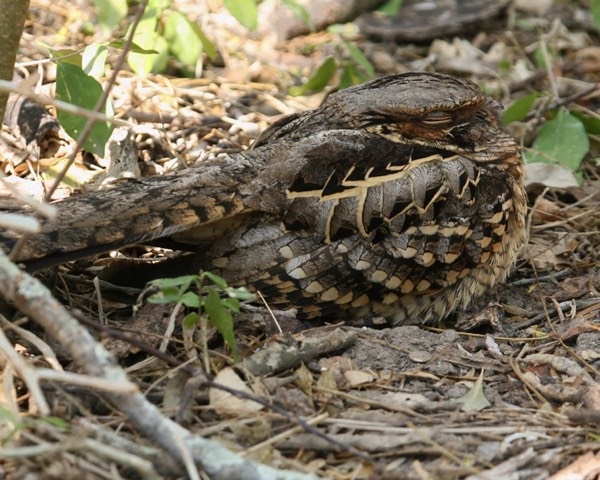
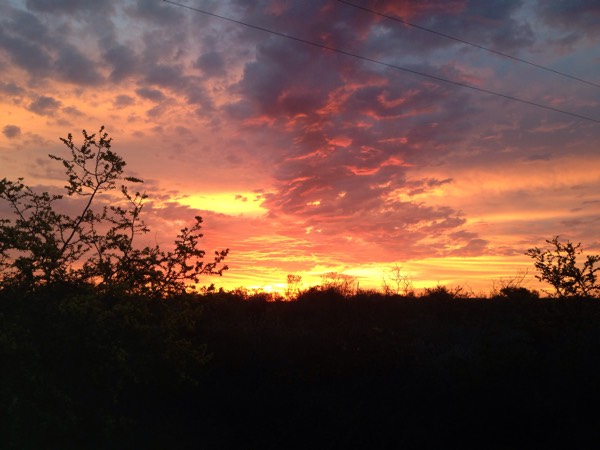
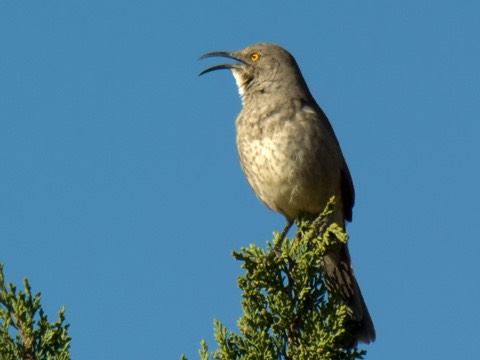

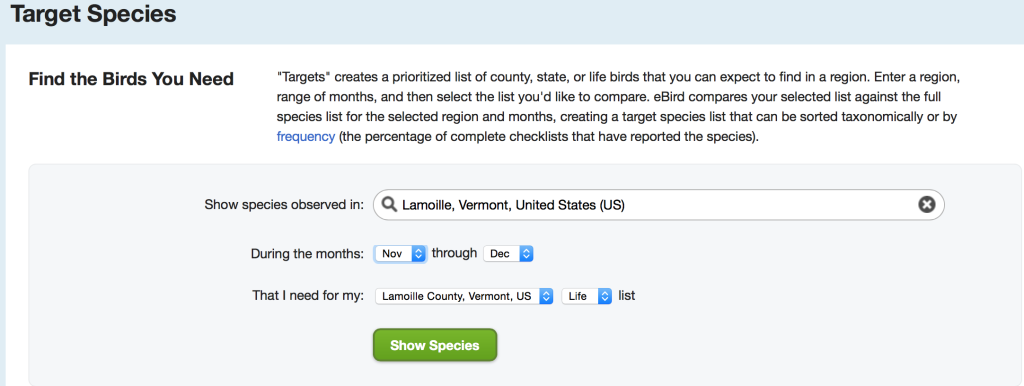
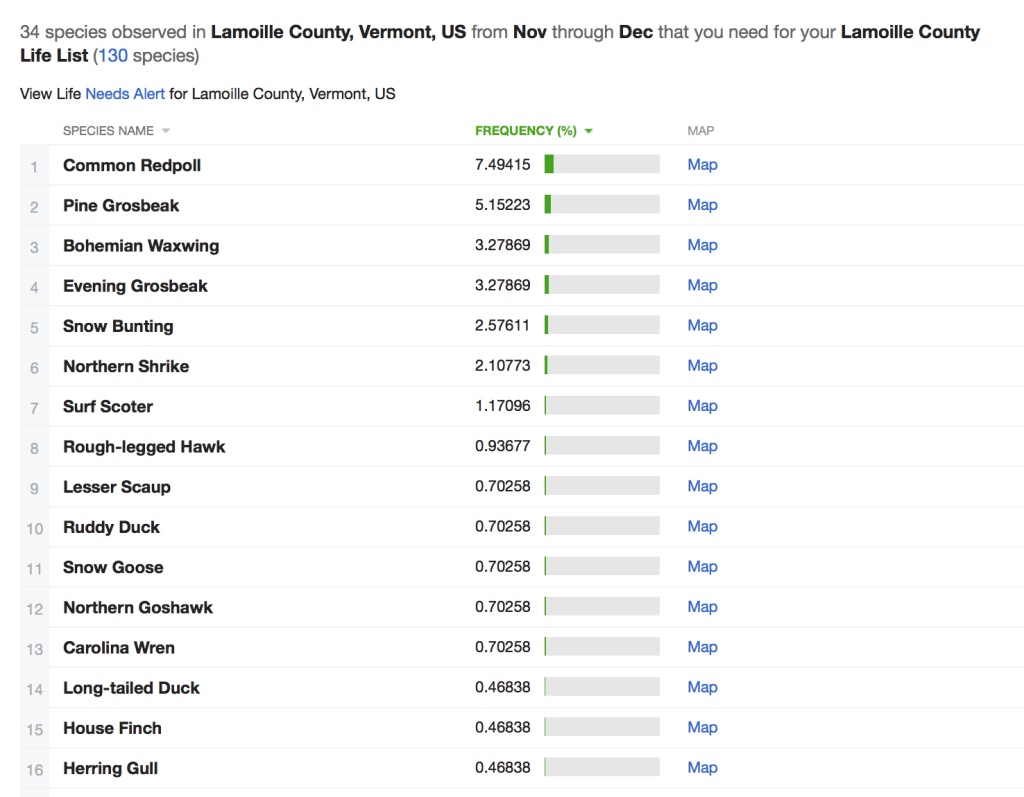
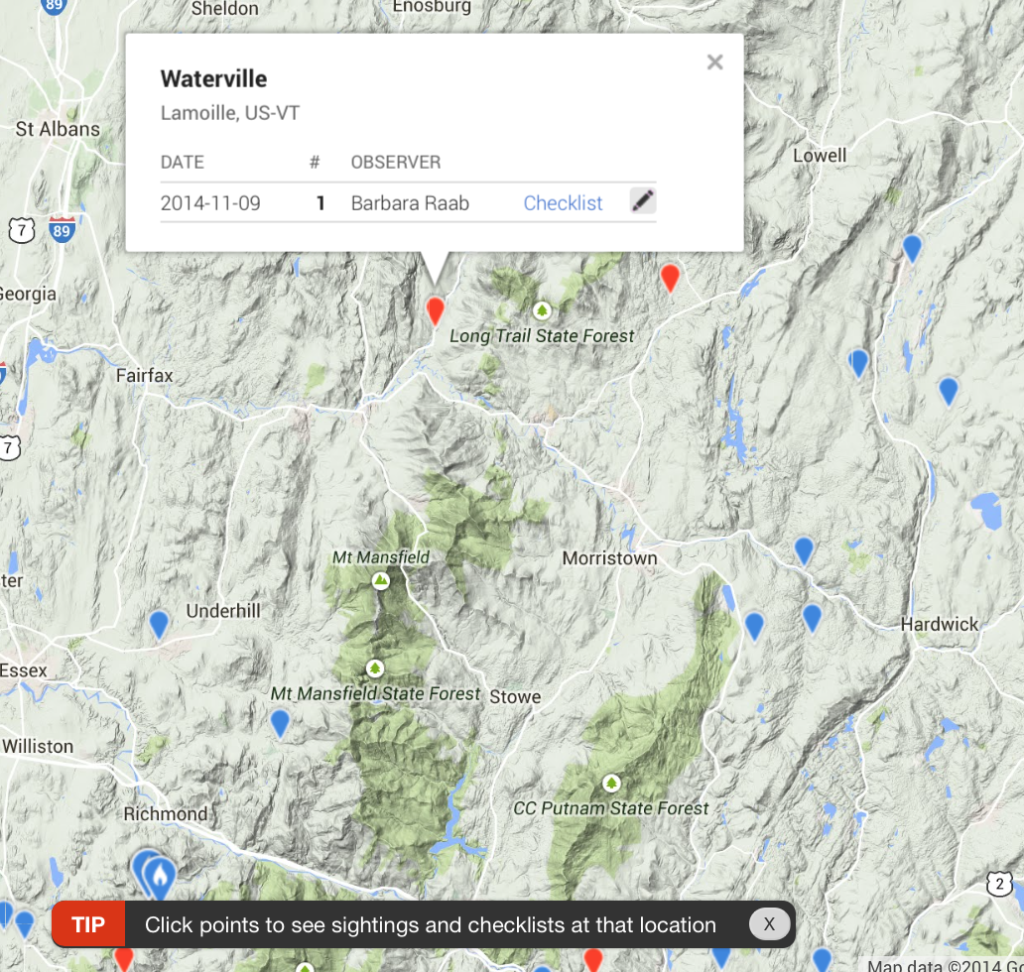
 2. Snow Goose: these guys were just arriving in numbers in November in much of their wintering range. They are also locally rare in many areas, so they are of interest to many state and county listers.
2. Snow Goose: these guys were just arriving in numbers in November in much of their wintering range. They are also locally rare in many areas, so they are of interest to many state and county listers.




